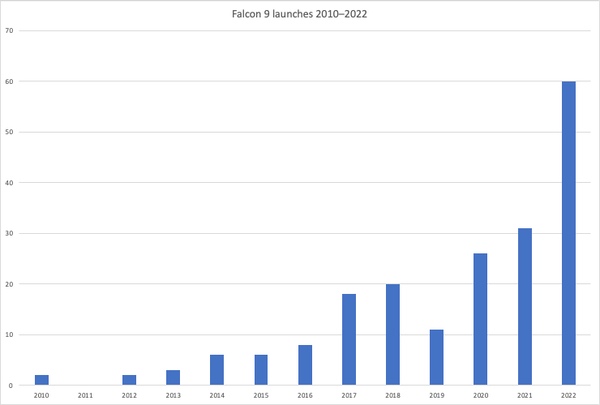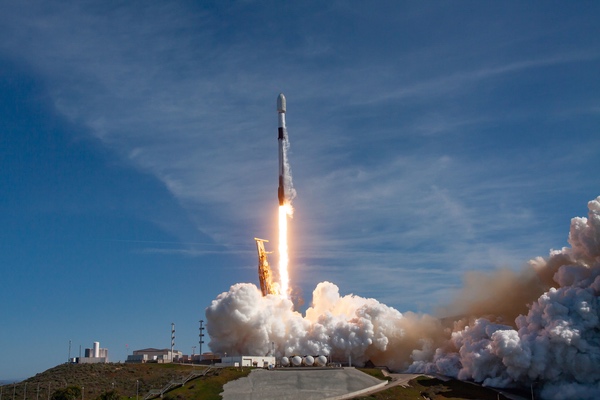The Falcon 9 achieves the shuttle’s dreamsby Francis Castanos
|
| It is fascinating to realize that, in 2022, Falcon 9 achieved the shuttle’s early objectives at last. |
With perfect hindsight 1996 seems to be the closest we ever got from a reasonable, realistic Space Shuttle annual flight rate. Remember: the fleet was back to four orbiters since 1992: Columbia, Discovery, Atlantis, and Endeavour. For the record, 1996 was also the beginning of a new and dangerous era that drove the shuttle into the wall for the second time: STS-107. The CAIB clearly identified severe budget cuts of the late Goldin era as a major driving force there. Faster-better-cheaper may have been useful early on, but they pushed it way too far. The 1999 Great Mars Fiasco was an early warning through the robotic exploration program. STS-107 was its counterpart in the human spaceflight area, unfortunately.
Now, how do Falcon 9 flight rates compare to the above? Falcon 9 started flying in June 2010 and has now flown more than 200 times. What can be said about it, though, compared to Space Shuttle own flight rates?
 |
Falcon 9 flight rates reached a first plateau in the 2010s that put them in line with the shuttle’s highest flight rates. It took Falcon 9 until 2020, though, to get itself out of that plateau. In 2020 and 2021 the flight rate jumped significantly. The reason is all too obvious: Starlink.
Conclusion
And so, by 2022 there it is: the Falcon 9 flight rate exceeded NASA’s early 1970s projections of one shuttle launch every 6.4 days. And it will not stop there. SpaceX’s next objective is 100 flights a year. (As of early March SpaceX had conducted 14 Falcon 9 launches and one Falcon Heavy.)
As noted in the introduction, it is pretty interesting to try and compare Falcon 9/Dragon and Space Shuttle. They are both partially reusable with a crewed capability and/or 23 tons to orbit payload, not to mention the goal of flying once a week to support a space station.
But beyond that, they are utterly and absolutely different. Still, as a space nerd who grew up in the 1990s it is fascinating to realize that, in 2022, Falcon 9 achieved the shuttle’s early objectives at last!
Note: we are using a new commenting system, which may require you to create a new account.
